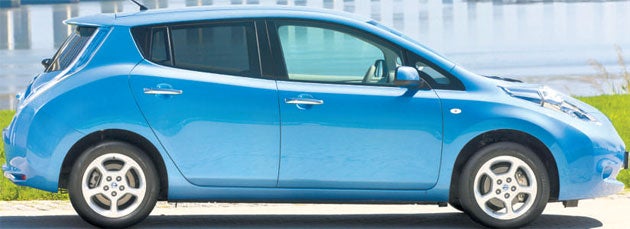
Your support helps us to tell the story
From reproductive rights to climate change to Big Tech, The Independent is on the ground when the story is developing. Whether it's investigating the financials of Elon Musk's pro-Trump PAC or producing our latest documentary, 'The A Word', which shines a light on the American women fighting for reproductive rights, we know how important it is to parse out the facts from the messaging.
At such a critical moment in US history, we need reporters on the ground. Your donation allows us to keep sending journalists to speak to both sides of the story.
The Independent is trusted by Americans across the entire political spectrum. And unlike many other quality news outlets, we choose not to lock Americans out of our reporting and analysis with paywalls. We believe quality journalism should be available to everyone, paid for by those who can afford it.
Your support makes all the difference.Price: £25,990 (after govt. £5,000 grant)
Engine capacity: AC synchronous
Power output (PS@rpm): 80 @ 2730-9800
Top speed (mph): 90
0-62 mph (seconds): 11.9
Range: 109 miles
CO2 emissions (g/km): zero
As an early adopter of the electrically powered vehicle (I own a GWiz), I have been looking forward to the arrival of another petrol-free car. Up until now it’s been the roller boot/milk float GWiz or the Tesla, a sports car so sleek and so expensive that it’s a very rare sight. Nissan’s Leaf started appearing in the UK in March and it’s already been heralded as the European Car of the Year 2011. It’s got the jump on the electric vehicles (EV) coming down the line from just about every other manufacturer (even Rolls Royce are trialling an EV). But can a plug-in car ever compete on a level playing field with a conventional one? On the early evidence of a weekend with the Leaf, the answer’s a tentative ‘yes’. It may seem bizarre for someone who crams themselves into the clunky, unaerodynamic bumper car to find fault with another car’s styling, but the Leaf would look so much more elegant without the raised bug-eye lights on its bonnet. I suppose in profile there’s a certain alligator-face appeal, but it detracts from the smooth lines elsewhere.
The five-seater Leaf’s doors close with a satisfying ‘thunk’. Inside, the pushbutton start, the gleaming dash display and tilting, tricked-out radio/CD/satnav console are what you’d expect from a box-fresh model. There’s plenty of elbow room front and back, and the boot is capacious indeed – considering a car powered by electricity needs to be as light as possible. All of which is fine and good, and the car’s silent power never ceases to be a pleasure – I offer an array of friends lifts and they all gasp as we glide off. The Leaf has got serious acceleration. It’s such a thrill to hit the motorway and cruise silently and smoothly at more than 70mph: it’s an entirely new experience for fans of green driving. However, a serious caveat. Green drivers know that their biggest fear is running out of power – you can’t push an EV into the petrol station and top up (full charges take in excess of eight hours). So to take the Leaf onto a fast road and give it its head is a risky business. I soon had to slow down to 50mph to get safely to my destination. But if you keep your eye on the dash, where you’re fed instant updates on your remaining lithium-ion battery power it’s entirely possible to get 80 or so miles from an overnight charge.
THE COMPETITION
In the near future, we’ll be able to buy such fully electric models as the Th!nk City, the Smart ED, or for solo drivers, the Renault Twizy car/scooter hybrid, pictured left. They’re all tiny; the nearest to a family car you’re like to get right now is the Mitsubishi i MiEV (£38,950, not including the government’s plug-in grant of £5,000).
Join our commenting forum
Join thought-provoking conversations, follow other Independent readers and see their replies
Comments